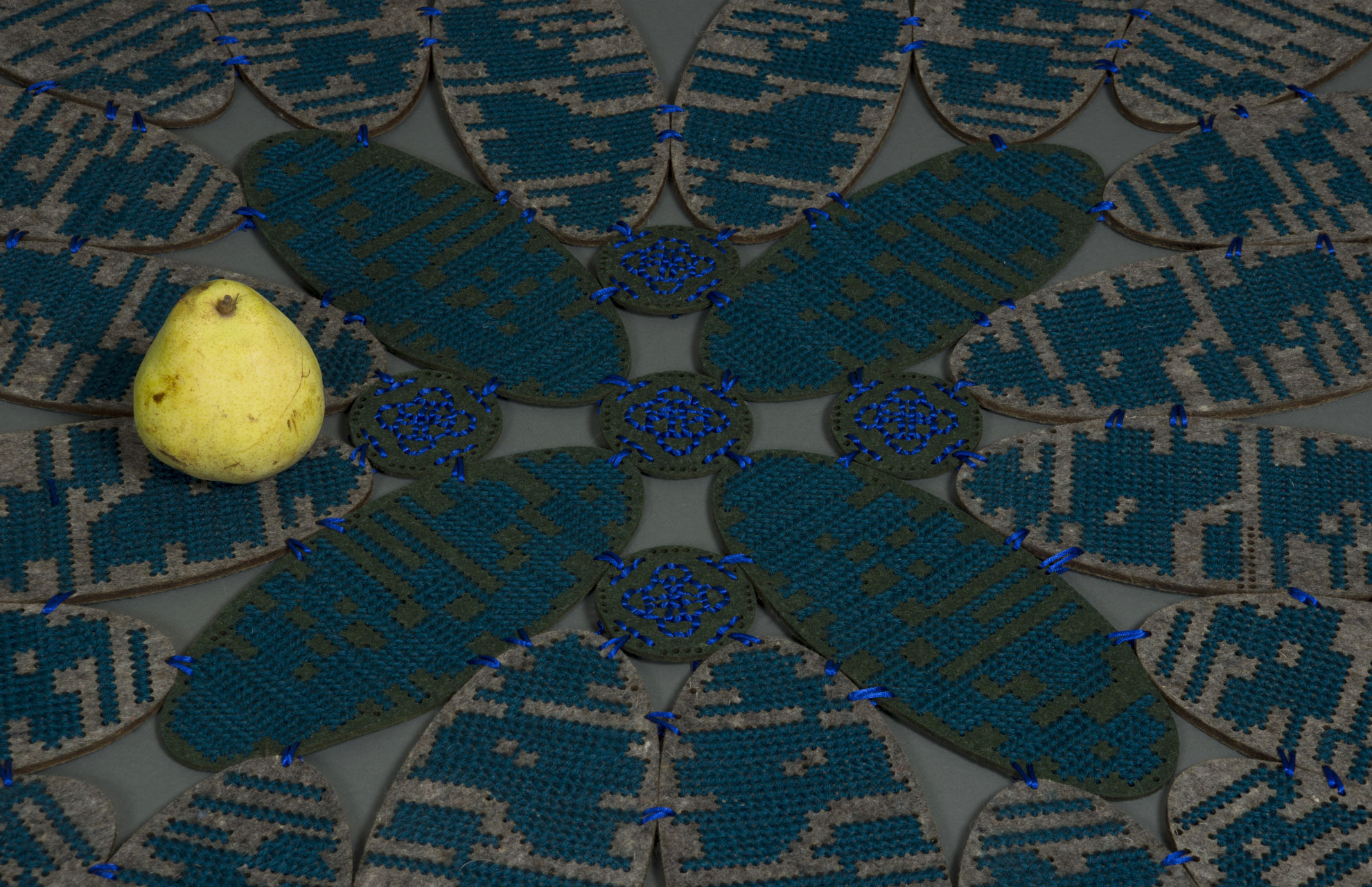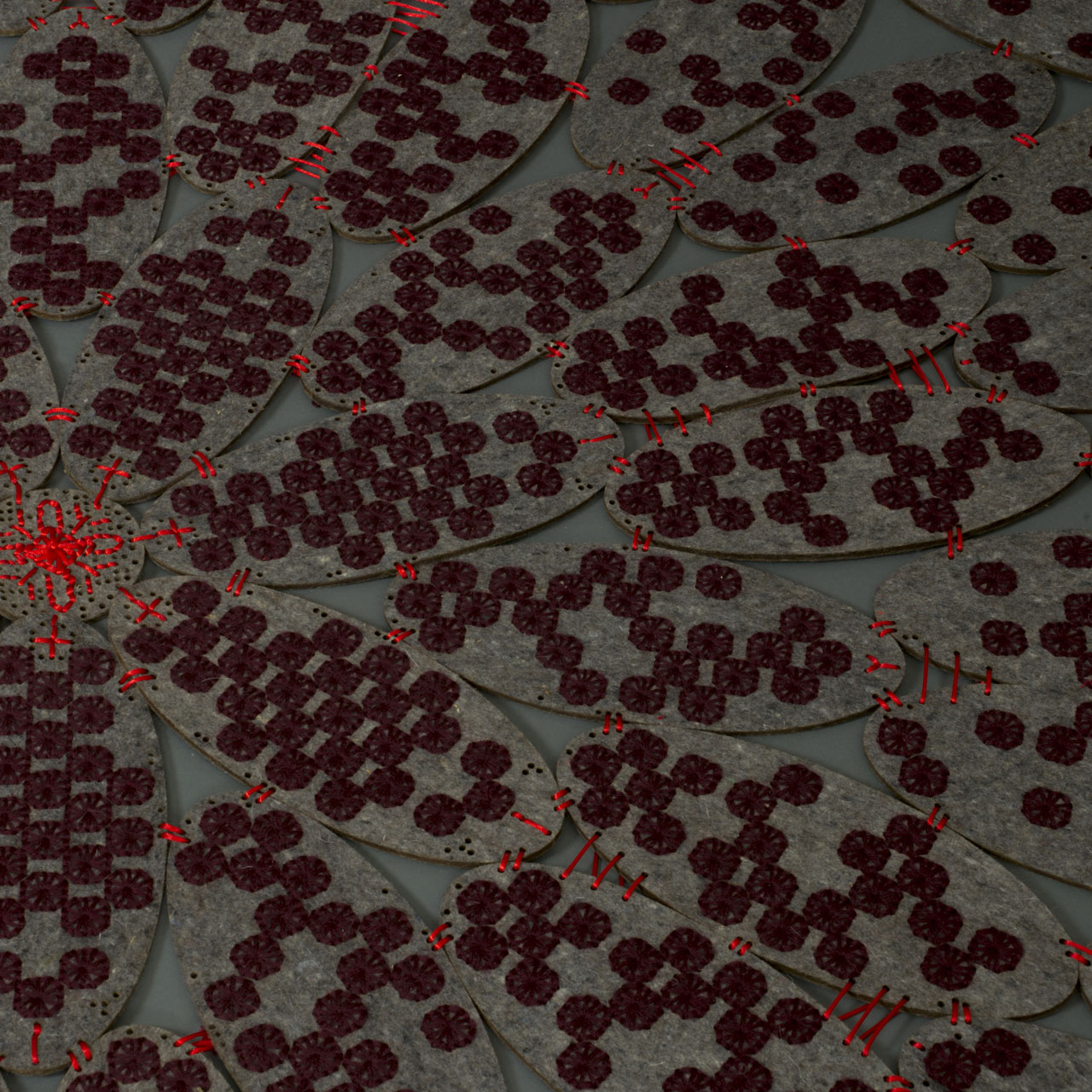

Ornamentation is one of the main issues in the creation of spaces and objects. Initially seen as a mischief according to Adolphe Loos, whose approach was supported by the moderns to change its appearance from an ostentatious symbol of nobility and luxury to a sign-like texture, weave and colour, the notion reappeared under different auspices in the early post-modern era to create less grey and dark objects and spaces, corresponding to the expectations of a changing society in the 1970s and 1980s. Today, Design and Crime (Hal Foster) emphasises the existence of an ever-changing design style to support growth. The challenge is therefore to think of an ornamentation developed by each individual and coming out of industrial production. The files are left to the user, so that he or she can change a part, an assembly, or make it evolve, the work is visible on the Ultra Ordinaire website.
Laser-cut natural felt, file produced by interface, application accessible on computer.
The carpet is a central element of conviviality, it determines a space, creates a warm atmosphere, a key piece whose price is quite important. Designed so that the user can take part in its creation, or within the framework of quality craftwork supporting the development of communities or cooperatives, the interface allows the patterns to be produced from a personal choice of images or illustrations, or from a specific embroidery technique.
